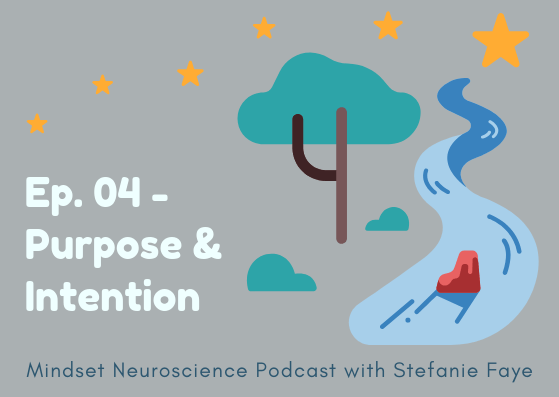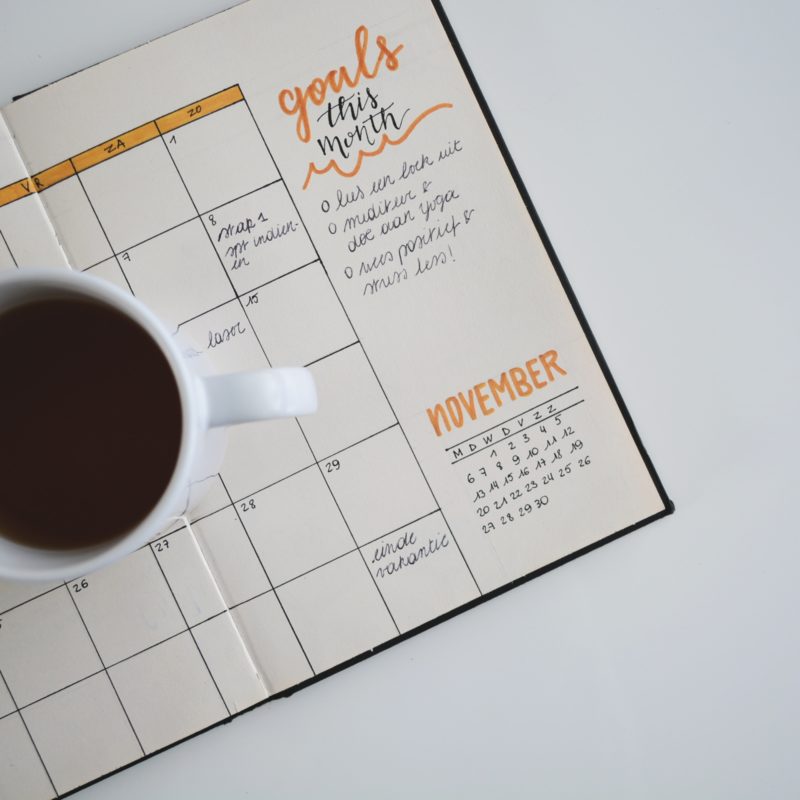Humans are an incredible species that can imagine a reality for themselves that does not yet exist - and then create new circuits to achieve that future reality.
We can create a future version of us that is more ideal than what we are currently experiencing.
When we project an image of our future, it does not yet exist yet. This means that our brain does not currently have the neural and behavioral resources to experience that future version.
It must create them. This is the beginning of the learning journey.
As we move towards that future version, we move out of our familiar, repetitive patterns and neural circuitry.
This alerts the brain-body system that it will need ‘expensive material’ to start accommodating these new behaviors.
Things like brain glucose and enzymes are needed - these are resource-intensive for the brain-body, so it is conservative with these until it is clear that the environment and behaviors are going to use new circuits over and over again to be worth these resources.
When we are trying to learn new things or ways of being, this requires a huge amount of activity in the prefrontal cortex - so that we can focus on this new task. Think of how much focus you need when you first learn to ride a bike or drive a car. Once you have done those things enough times, the prefrontal cortex can take a back seat, and the actions become more automated and stored in different areas of the brain.
This means that even when we feel like we are not doing well, that we are not actually changing - we must keep our sights on the goal.
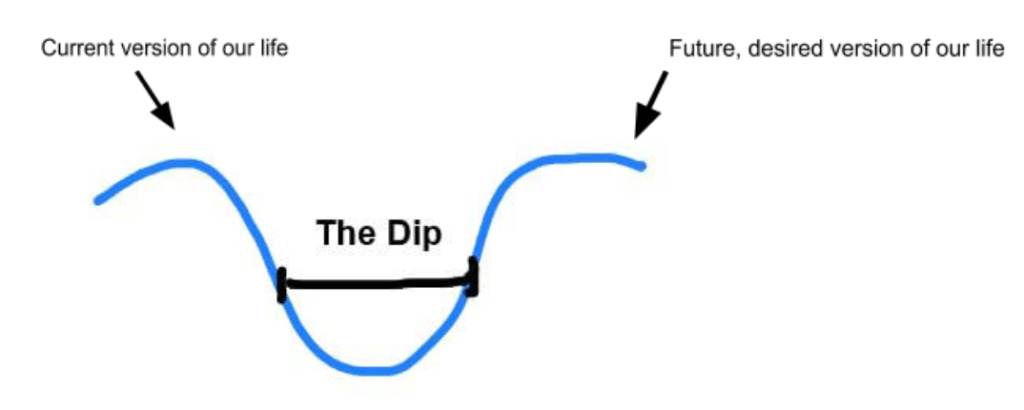
Enter the Dip¹.
This is the part of the process of change where we are in new and unfamiliar ‘neural territory’.
It will not feel natural.
It will feel exhausting.
The brain is gathering resources to develop new circuits.
If we hold steady and continue to challenge ourselves with new, desired behaviors that align with that future vision, the brain will continue to furnish those new circuits with the needed materials.
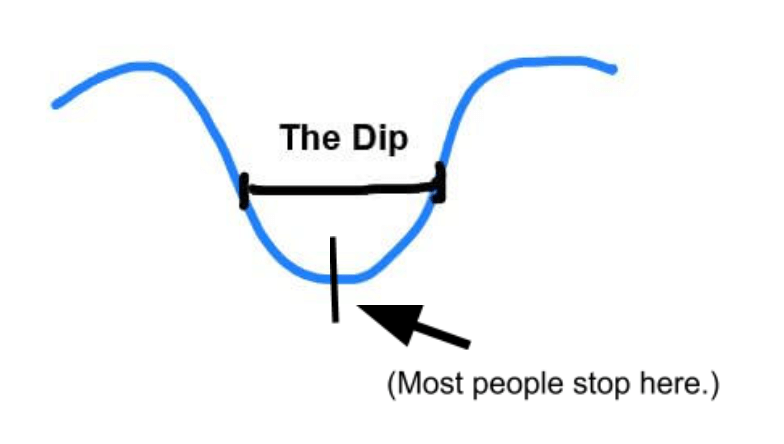
If we stop during the Dip - as many people do because that’s when it feels the most difficult - the brain will conserve those expensive resources.
It will not see the need to use up material that is not going to be called upon.
This is when we resort back to old behavior. This is inevitable, and it's part of the transformation journey.
When it comes to re-wiring the brain-body system, there will be moments where the brain resorts back to the energy-conserving old circuits.
But if we stay in a supportive environment that challenges us to fire the new circuits, this leads the brain to get closer and closer to myelinating and establishing the new networks.
This is why we MUST have people around us who are OK with us changing and evolving and getting better.
Many people who surround us will not be ok with you changing if they are not in their own process of change.
That's fine - it's not necessarily about cutting people out, but your ratio of supportive environments needs to outnumber the less supportive ones.
Your interactions with people who have habits and attitudes that reflect the less-desired or undesired version of you need to be much less frequent than interactions with supportive environments. Supportive environments include people who are mentors or those who are joy-filled and are fulfilling their life's mission, but they don't all need to include people - it can be nature, an art or dance studio, being by bodies of water, etc.
If you can keep surrounding yourself with the conditions and reminders of the future, desired version of your life, the new version will start to feel easier.
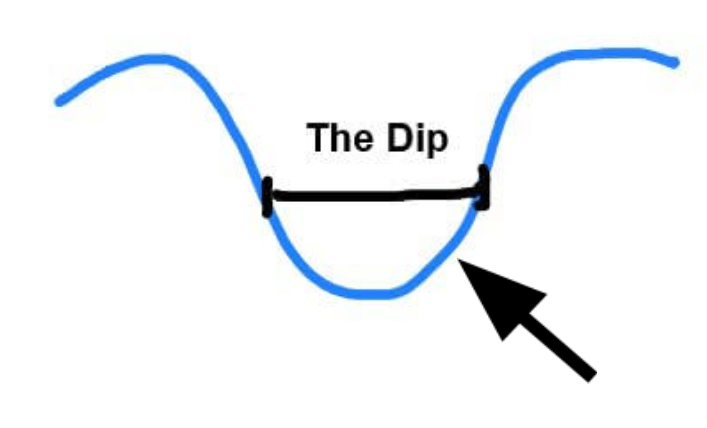
This is the upswing of the Dip.
As the networks start getting more myelin, they start firing more and more. A new behavior now starts to feel more natural. As the new pattern feels more natural, the old networks lower in activity, which leads to synaptic pruning.
As we continue to be in supportive environments and experiment with new behaviors and mindsets, we can get to a point where that ‘future version’ of us becomes the one we experience more often than the old one.
But just remember, the 'Dips' don't stop there! We don't make one change and then 'smooth sailing from now on!'
As humans, we hunger to evolve, so we will move on to newer and newer challenges that make us feel like a beginner again. But now from the skill set and perspective of that newer, more evolved, wiser version.
Once we consciously go through a Dip, we become armed with the knowledge that we can be in the darkest valley of hopelessness and make it up to the other side.
Activity to try:
- Draw a learning dip.
- Now draw a figure/symbol that represents you now.
- Draw a figure/symbol on the other side of learning dip that represents a future version of you that you would like to experience.
- If you can, write a few words or draw how that would feel.
- Do any words come to mind? Now look at the lowest part of the Dip.
- What are other words that come to mind? Where do you think you are in your learning journey?
- For the next week, pick one new action/behavior to try and do it five times this week to see if it feels any more ‘familiar’ to you. It could be getting up at a certain time, doing a healthy bedtime ritual like journaling, stretching,gratitude.
Click here to get a copy of a FREE minibook: Mindset, Discomfort and New Realities

